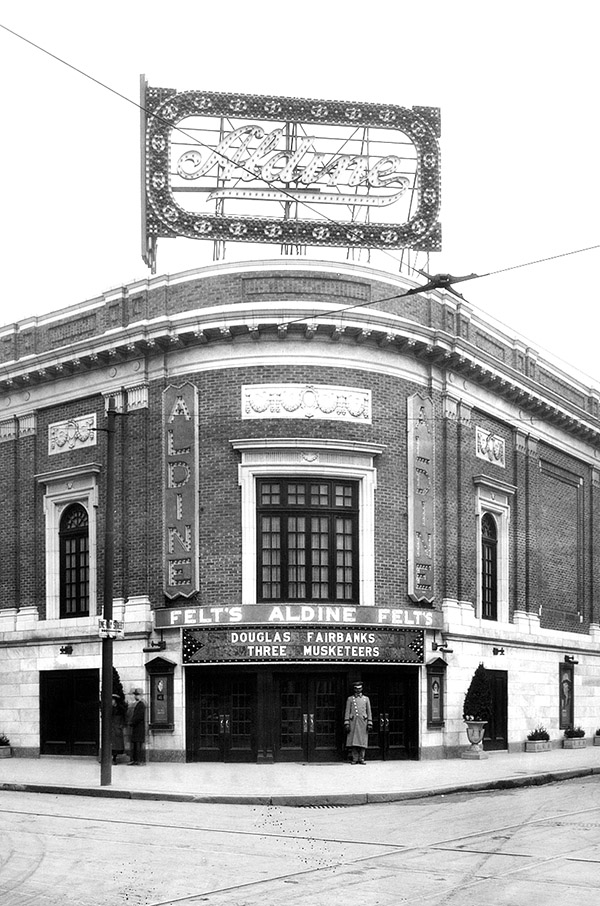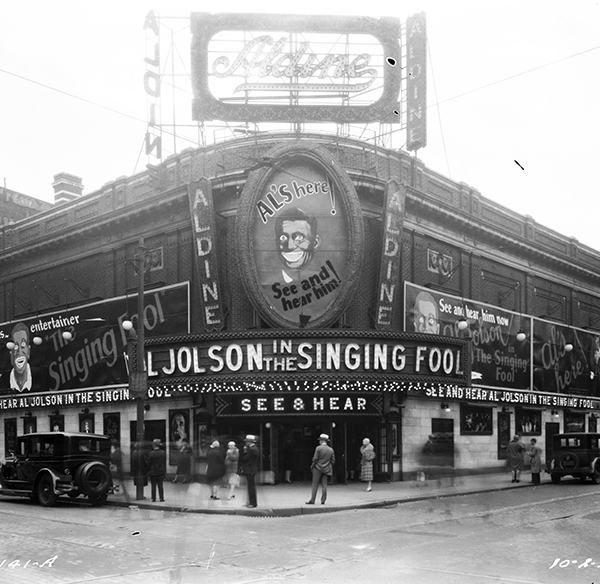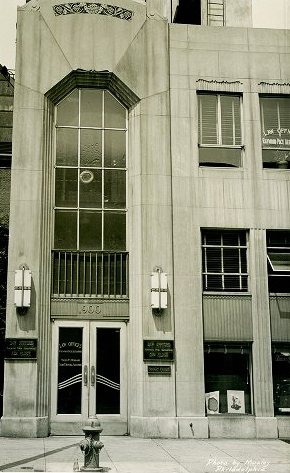W hat’s all this about the City of Brotherly Love? Philadelphia was a flat-out racist city a century ago.
Raymond Pace Alexander, the first Black graduate of Penn’s Wharton School in 1920 returned home with a law degree from Harvard three years later. He would later recall: “Excepting only the restaurants in the John Wanamaker store and the Broad Street, Station, a Negro in 1923 could not be served in the restaurant or café of any first-class hotels in Philadelphia, nor could he obtain food in any of the central city restaurants. … [The] only place he could obtain food in central Philadelphia was in the Automats, which were colorblind … restaurants away from the central section and those in the suburban area were even worse. Their method of refusal sometimes took the form of violence.”
Likewise, the city’s many movie theaters, ostensibly palaces for the people, were offenders. Theater managers deployed an array of tactics to keep Blacks from entering. When Marian Dawley and a few friends went to the movies at 59th and Market Streets, they were told “all tickets for colored people have been sold.” When the new Aldine at 19th and Chestnut opened in 1921, its manager, with a pocketful of outdated tickets and stubs, regularly switched them to turn away Black customers.

How would the city’s Black community deal with this? Two options were acceptance and building theaters for Black audiences. The Dunbar Theatre, which opened in 1920 at Broad and Lombard, would be “owned and controlled by citizens of color.” A third alternative? Use the law to challenge, if not change, Philadelphia’s racist ways.
By 1924, Alexander was ready to face the challenge. He had already garnered experience—and some success—in civil rights litigation. During the summer of 1921, between his first and second years of law school, Alexander brought his very first civil rights suit against New York’s Madison Square Garden for denying him use of their swimming pool. At Harvard, where residence in dormitories was made compulsory for first year students, Alexander took on their contradictory rule prohibiting occupancy by Black students. His essay “Voices From Harvard’s Own Negroes” argued for change, drew praise from professor Felix Frankfurter (a future Supreme Court Justice) and contributed to the reversal of Harvard’s exclusion policy.
Back home in Philadelphia, the newly-minted lawyer took what he learned in the dormitory victory to shape civil rights work that would last for decades, according to Kenneth Mack. Pennsylvania’s 1887 Equal Rights law “lacked “teeth,” Alexander would later admit, but provided enough traction “to file suits against discrimination.”
Where would Alexander launch his campaign? By repeatedly refusing tickets purchased by Black citizens and denying them passage through the damask-brocaded, marble-encrusted, crystal-laden lobby of the Aldine, Center City Philadelphia’s “most brilliantly lit” movie house, manager Charles Starkosh provided Alexander with exactly what was needed. And with the screening of Cecil B. DeMille’s “mighty dramatic spectacle,” The Ten Commandments, the case had the potential to be both iconic and ironic.
“The Aldine’s choice to exclude Black theatergoers sparked perhaps the most sustained set of conflicts over public accommodations in the city” during the 1920s, writes Mack. After an initial loss in court, Alexander came forward with additional plaintiffs and the court “condemned the Aldine’s actions, prompting a settlement.” Theater management “issued a public apology and promised to end its discriminatory policy.”

Alexander’s civil rights cases and his boycotts, combined with the Black vote, would help guide the passage of a new Pennsylvania Equal Rights Law in 1935, which, according to Alexander, would have “some nasty, sharp–edged teeth.”

Still, Philadelphia’s prevailing culture remained steeped in systemic racism. In October 1928, three years after Alexander’s victory, the Aldine screened The Singing Fool featuring Al Jolson, the “shameful poster boy” of blackface (as he would be called). For the film’s entire run, giant portraits of Jolson—in blackface—loomed over the intersection of 19th and Chestnut.
Jolson’s ephemeral image, of course, would soon be taken down. And by 1935, the same year as Pennsylvania’s new Equal Rights Law, Alexander’s practice had become successful enough to acquire land and commission a brand new, three-story building “in the heart of the almost exclusively white Center City of Philadelphia.” The location: right across 19th Street from the Aldine. There, with his wife/partner, lawyer/economist Sadie Tanner Mossell Alexander and others in the firm, Alexander would do much more to advance the cause of civil rights.
Raymond Pace Alexander had made sure to have the last word in the battle for the soul of 19th and Chestnut Streets. This time it would be set in stone.
+++
[Sources: David A. Canton, Raymond Pace Alexander: A New Negro Lawyer Fights for Civil Rights in Philadelphia, (Jackson: University Press of Mississippi, 2013); Ted Gioia, “A Megastar Long Buried Under a Layer Of Blackface.” The New York Times, October 22, 2000; Kenneth W. Mack, “Rethinking Civil Rights Lawyering and Politics in the Era Before Brown,” The Yale Law Journal; New Haven Vol. 115, no. 2, (Nov 2005); Bradley Maule, “Paced For Growth At 1900 Chestnut,” Hidden City, May 8, 2014; Colin A. Palmer, editor. “Raymond Pace Alexander,” Encyclopedia of African-American Culture and History,. Vol. 1. 2nd ed. (Detroit: Macmillan Reference USA, 2006); “All Seats For Colored People Are Sold Out,” Philadelphia Tribune, March 8, 1919; Philadelphia to Soon Have a New Colored Play House, Philadelphia Tribune, November 8, 1919; “Theatre Employee Accused of “Switching” Tickets to Colored Patrons,” Philadelphia Tribune, March 29, 1924;Aldine Theatre Case Settled in Manager’s Favor, Philadelphia Tribune, March 2, 1925; Aldine Theatre Opens, Inquirer, November 12, 1921; “The Singing Fool” Begins at Aldine,” Inquirer, October 2, 1928.]

8 replies on “Culture War at 19th & Chestnut Streets”
Great piece. Is the Alexander building still standing?
Thanks for reading!
Yes, the Alexander building is a Target and the Aldine is a CVS.
The Preservation Alliance recently nominated the Aldine Theater to the Philadelphia Register of Historic Places. Mr. Finkel’s research and writing adds an important and timely dimension to our understanding of the history of this landmark, the last remaining movie palace in Center City.
But the original light fixtures on Alexander building were lost during conversation
Fascinating article. I wonder why he isn’t better known, and Sadie is so well recognized.
So, are they now planning to level the two Buildings? Articles such as this, just continue to fuel the fire! How long before they deem the legacy and Statue of William Penn as a symbol of Racism? Its becoming far worse than a Salem Witch Hunt! Makes me sick!
Ken, thanks so much for telling this important story of racism and for bringing to light the work of Raymond Alexander. Fine writing, as always. One small note, however. Alexander couldn’t have seen “The Ten Commandments” in VistaVision at the Aldine in 1924, since it wouldn’t be created for 30 years. It was DeMille’s 1956 remake that was in shot in VistaVision, which was Paramount’s answer to 20th Century Fox’s Cinemascope.
Bob –
Thanks so much for your kind words and close reading. The fix is in.
– Ken